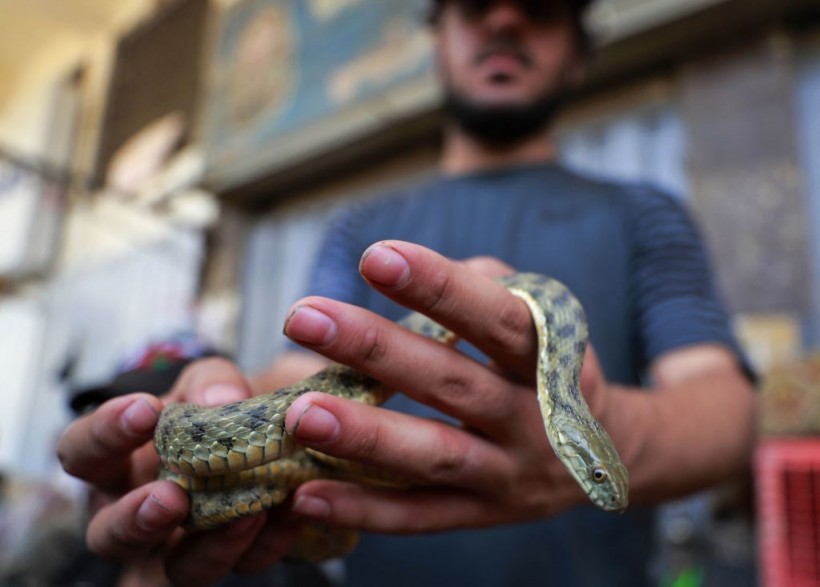Scientists previously thought that microbes such as bacteria cannot thrive in snake and spider venom, despite them having lived in the most inhospitable places on Earth. However, a new discovery suggests otherwise.
These tiny microorganisms have lived in arid deserts, toxic lakes, and even deep in the Earth's crust below the ocean floor. Just recently, it was found that they can also survive in venom of snakes and spiders, according to ScienceAlert. This is contrary to the belief that venom is an entirely sterile environment for microbes, as it contains antimicrobial compounds that kills bacteria. This means that venom could already be populated with bacteria or other microbes before a person is even bitten.
"We found that all venomous snakes and spiders that we tested had bacterial DNA in their venom," molecular biologist Sterghios Moschos of Northumbria University in the UK stated in the university's newsroom.
"Common diagnostic tools failed to identify these bacteria correctly - if you were infected with these, a doctor would end up giving you the wrong antibiotics, potentially making matters worse," Moschos notes.
An Odd Fact that Should Perhaps be Unsurprising
While it is true that antimicrobial compounds are found in venom, the study published in scientific journal Microbiology Spectrum provides strong genetic and cultural evidence that bacteria can not only survive in the venom glands of snakes and spiders, but has the potential to mutate and resist the 'notoriously' toxic liquid.
It also suggests that snake-bite victims should not only be treated with antivenom for the toxins, but may therefore also need anti-bacterial treatment.
Moschos and his colleagues sampled five snake species of puff adder Bitis arietans, black-necked spitting cobra Naja nigricollis, common lancehead Bothrops atrox, western diamondback rattlesnake Crotalus atrox and coastal taipan Oxyuranus scutellatus, and two spider species of Indian ornamental Poecilotheria regalis and Brazilian salmon pink bird-eating tarantula Lasiodora parahybana.
"When we sequenced their DNA we clearly identified the bacteria and discovered they had mutated to resist the venom. This is extraordinary because venom is like a cocktail of antibiotics, and it is so thick with them, you would have thought the bacteria would not stand a chance, Moschos says. "Not only did they stand a chance, they had done it twice, using the same mechanisms."
Also read: Axolotls Life Span: Are These Giant Salamanders That Can Regenerate Body Parts Going Extinct?
New tool to Understand Antibiotic Resistance
Nevertheless, the team notes that treating the infected venomous bites may not be as simple as treating a secondary infection due to the adaptations of microbes throughout the years and antibiotic resistance that a colony of bacteria have developed.
However, results provide a new tool to understand antibiotic resistance and finding a way around other circumstances, knowing that 2.7 million venomous bite-related injuries occur annually, of which 75% develop infections in venom toxin-damaged tissue and contract common disease caused by bacteria Enterococcus faecalis.
In fact, the team could compare the findings to E. faecalis samples found in hospitals.
"By exploring the resistance mechanisms that help these bacteria survive, we can find entirely new ways of attacking multi-drug resistance, potentially through engineering antimicrobial venom peptides," molecular biologist -author Steve Trim of Venomtech adds.
Related article: Rare Two-headed Snake Defies Odds of One in 100 million, Survives 17 Years
© 2024 NatureWorldNews.com All rights reserved. Do not reproduce without permission.


![Tsunami Hazard Zones: New US Map Shows Places at Risk of Flooding and Tsunamis Amid Rising Sea Levels [NOAA]](https://1471793142.rsc.cdn77.org/data/thumbs/full/70325/280/157/50/40/tsunami-hazard-zones-new-us-map-shows-places-at-risk-of-flooding-and-tsunamis-amid-rising-sea-levels-noaa.jpg)



